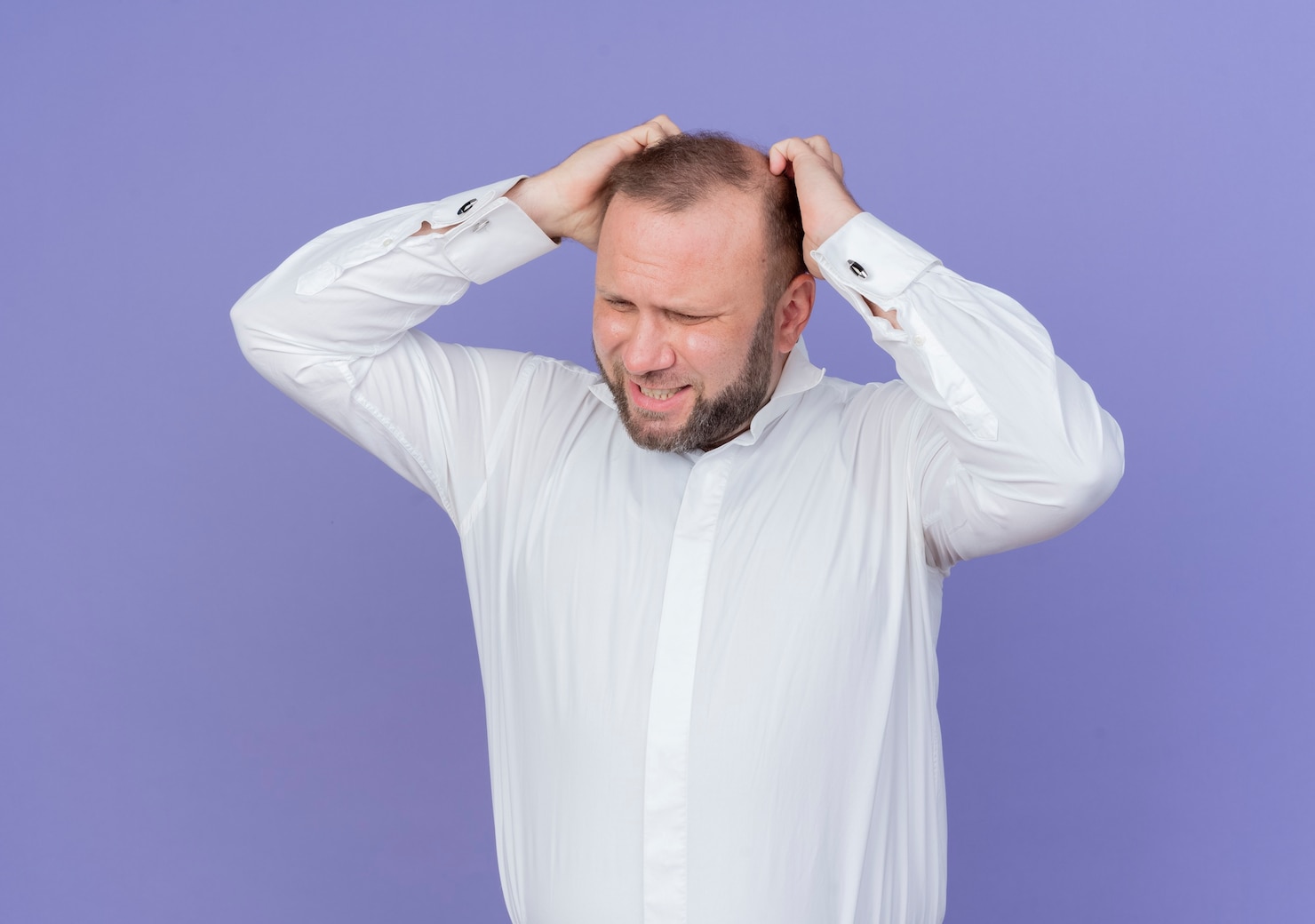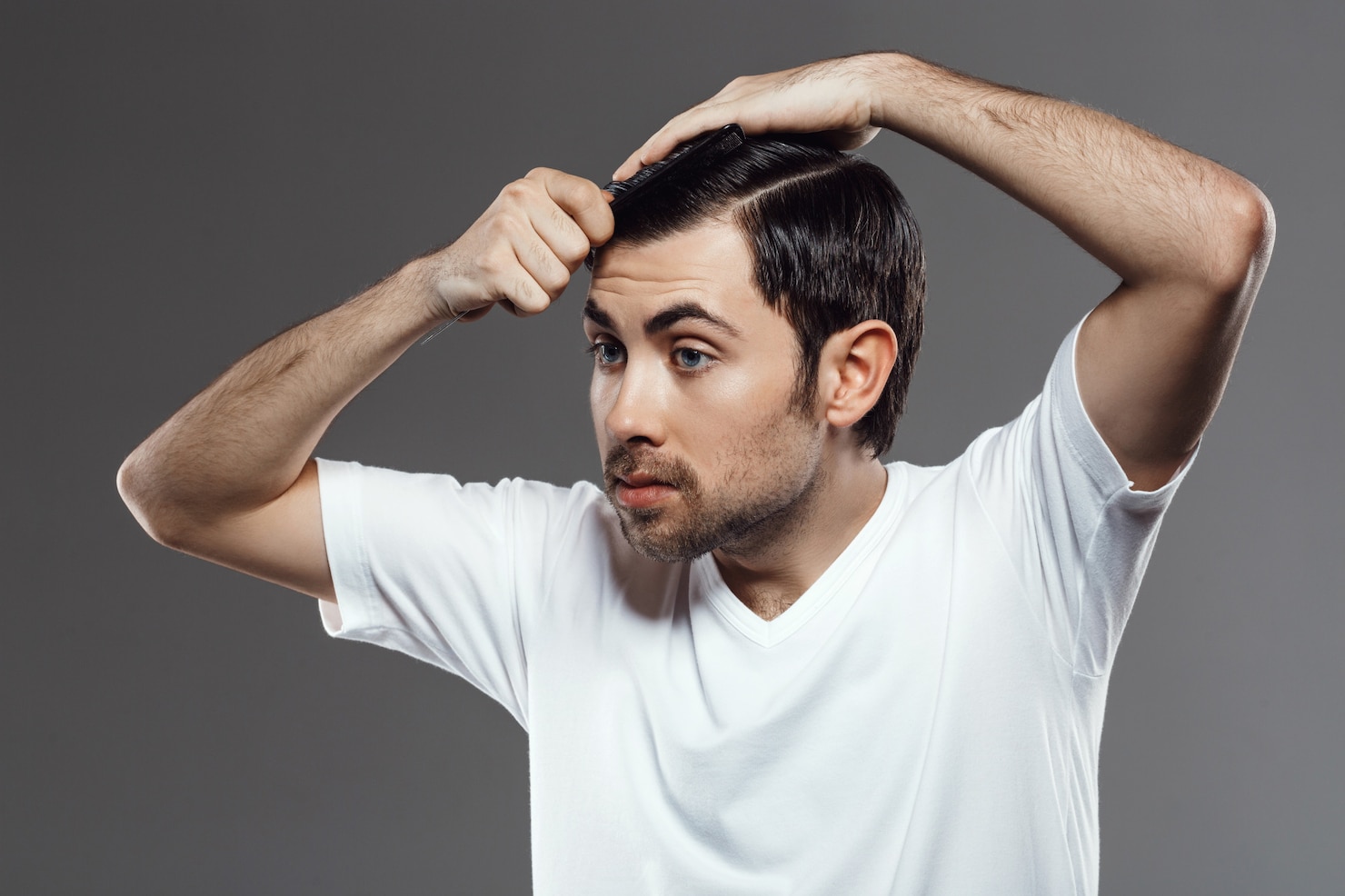
Are you troubled by hair breakage at crown? Don't worry, we've got you covered. Explore the underlying causes and effective strategies to combat this common concern among men. Discover nourishing products and expert tips to restore your hair's health and vitality.
When it comes to hair care, men often find themselves navigating uncharted territory, unaware of the transformative power that lies within a well-groomed mane. But fear not, for you are about to embark on a journey into the art of men's hairstyling.
Importance of Hair Care for Men
Gentlemen, it's time to shed the notion that hair care is solely reserved for the fairer sex. In fact, proper hair care is a vital aspect of your overall grooming routine, enabling you to exude confidence and express your unique personal style. The way you care for your hair can make a profound difference in your appearance, enhancing your features and leaving a lasting impression on those around you.
So why settle for anything less than exceptional when it comes to your locks?
Common Hair Concerns for Men
As you embark on your hair care journey, it's essential to address the common hair concerns that men often encounter. One such concern is hair breakage at the crown—a phenomenon that can be particularly distressing for those with Caucasian hair. Hence, there are increasing searches for terms such as “hair breakage at crown caucasian hair” and “chemical hair breakage at the crown.”
Hair breakage at the crown can result from a variety of factors, including excessive styling, harsh chemical treatments, and even the stress of daily life. Understanding the causes and implementing preventive measures can help you maintain a healthy and resilient crown of glory.
Understanding Hair Breakage at the Crown
Now, let's delve deeper into the intricacies of hair breakage at the crown. This phenomenon occurs when the hair strands in that area become weak, leading to breakage and a less-than-desirable appearance. For those with Caucasian hair, the crown can be particularly vulnerable due to its fine texture. Additionally, chemical treatments, such as harsh dyes or relaxers, can exacerbate the problem, leaving you with weakened strands that are prone to breakage.
It's crucial to adopt a hair care routine that focuses on strengthening and nourishing your hair to combat this issue. Incorporate gentle cleansing methods, nourishing conditioners, and regular deep conditioning treatments into your regimen. Avoid excessive heat styling and opt for protective hairstyles that minimize tension on the crown area. By implementing these practices, you can restore vitality to your hair and prevent further breakage at the crown.
Key Takeaway:
Hair breakage at the crown is a common concern for men, especially those with Caucasian hair. Understanding the causes and implementing preventive measures, such as adopting a gentle hair care routine and avoiding harsh chemicals, can help you maintain a healthy and resilient crown.Understanding Hair Breakage at the Crown
When it comes to comprehending the vexing issue of hair breakage at the crown, it is imperative to unravel the enigmatic nature of the hair shaft. Imagine this extraordinary structure as a multifaceted entity, comprising three distinctive layers: the cuticle, cortex, and medulla. The cuticle, akin to the outermost protective armor of the hair shaft, plays a pivotal role in safeguarding it against external aggressors.
Causes of Hair Breakage at the Crown
Now, let us explore the underlying causes of hair breakage at the crown, which can leave even the most dapper gentlemen in dismay. One common culprit is excessive styling, particularly when using heated tools like blow dryers, straighteners, or curling irons. The intense heat can weaken the hair shaft, leading to brittle strands that are prone to breakage.
Bleaching, perming, or coloring the hair, while transformative and alluring, can also compromise its structural integrity. The chemicals involved can weaken the hair shaft, making it more susceptible to breakage, particularly at the vulnerable crown area.
Key Takeaway:
Understanding the anatomy of the hair shaft and the causes of hair breakage at the crown provides valuable insights into addressing this pressing concern. Remember to handle your hair with care, avoid excessive heat styling, and be mindful of chemical treatments.Combatting Hair Breakage at the Crown

Image Source: FreePik
Proper hair washing techniques
When it comes to combatting hair breakage at the crown, mastering proper hair washing techniques is essential. The way you wash your hair sets the foundation for its health and strength.
Begin by wetting your hair thoroughly with warm water, allowing it to become fully saturated. Then, apply a small amount of shampoo, focusing on the roots and the crown area. Gently massage the scalp with your fingertips using circular motions, stimulating blood circulation and promoting a healthy environment for hair growth. Rinse the shampoo thoroughly, ensuring no residue is left behind.
After shampooing, it's time to condition. Choose a nourishing conditioner specifically formulated for your hair type. Apply the conditioner from mid-length to the ends, avoiding the roots to prevent weighing down the hair at the crown. Allow the conditioner to sit for a few minutes before rinsing it out. The conditioning step is crucial for providing moisture and protection, helping to strengthen the hair and minimize breakage.
Protective styling options
Another effective strategy for combatting hair breakage at the crown is to incorporate protective styling options into your routine. Protective styles, such as braids, twists, or updos, can help shield the fragile crown area from external stressors and minimize tension on the hair shafts. Opt for styles that don't require excessive pulling or tightness, as these can contribute to breakage. Additionally, consider using accessories like satin or silk scrunchies or headbands, as they reduce friction and prevent damage caused by traditional hair ties.
Regular trims
One often overlooked aspect of combating hair breakage at the crown is the importance of regular trims. Split ends and damaged hair are more prone to breakage, so scheduling regular appointments with a trusted hairstylist for a trim is crucial. Trimming the ends of your hair every six to eight weeks helps remove damaged and split ends, ensuring the health and strength of your hair from root to tip.
Key Takeaway:
Combatting hair breakage at the crown requires proper hair-washing techniques, incorporating protective styling options, and regular trims. By following these steps, you can strengthen your hair, reduce breakage, and promote healthy growth for a crowning glory that is both resilient and beautiful.Nourishing and Strengthening the Crown Area

Image Source: FreePik
Essential nutrients for healthy hair
It is crucial to nourish and strengthen your hair from within to combat hair breakage at the crown. One of the most effective ways to achieve this is by providing your body with essential nutrients that promote healthy hair growth. These nutrients work their magic by fortifying the hair follicles, improving blood circulation to the scalp, and enhancing overall hair health.
Start by incorporating foods rich in vitamins A, C, and E into your diet. These vitamins are renowned for their antioxidant properties, which help protect the hair follicles from oxidative stress and damage. Additionally, they promote the production of sebum, a natural oil that moisturizes and nourishes the scalp, preventing dryness and breakage. Consider adding spinach, carrots, citrus fruits, and almonds to your meals to obtain these hair-friendly vitamins.
Another key nutrient for strong and resilient hair is biotin, also known as vitamin B7. Biotin plays a vital role in keratin production, the protein that constitutes the structure of your hair strands. Increasing your biotin intake can help improve hair elasticity and minimize breakage. Foods such as eggs, salmon, avocados, and sweet potatoes are excellent sources of biotin.
Furthermore, don't overlook the importance of essential fatty acids, particularly omega-3 and omega-6. These healthy fats contribute to scalp health, reduce inflammation, and promote hair growth. Incorporate foods like fatty fish, flaxseeds, chia seeds, and walnuts into your diet to reap the benefits of these nourishing fats.
Natural remedies to promote hair strength
In addition to a nutrient-rich diet, certain natural remedies can further promote hair strength and resilience, specifically targeting the crown area. One popular option is massaging your scalp with essential oils, such as rosemary, lavender, or peppermint oil. These oils stimulate blood circulation to the scalp, nourishing the hair follicles and encouraging healthy hair growth. Gently massage a few drops of your chosen oil onto your scalp, focusing on the crown area, and leave it on for about 30 minutes before rinsing it off.
Another effective remedy is a homemade hair mask using ingredients like yogurt, honey, and coconut oil. Yogurt contains lactic acid, which helps exfoliate the scalp and promote hair growth. Honey is a natural humectant, locking in moisture and preventing dryness, while coconut oil deeply conditions and strengthens the hair. Mix these ingredients together, apply the mask to your hair, paying extra attention to the crown area, and leave it on for 20-30 minutes before rinsing thoroughly.
Key Takeaway:
Nourishing and strengthening the crown area requires a combination of proper nutrition and natural remedies. By incorporating vitamins A, C, and E, biotin, and essential fatty acids into your diet, you can promote healthy hair growth and reduce breakage. Additionally, scalp massages with essential oils and homemade hair masks can further enhance hair strength, nourishing the crown area and improving overall hair health.Conclusion
Combatting hair breakage at the crown is a journey that requires understanding the underlying causes and implementing effective strategies. By following expert tips and nourishing your hair, you can restore its health and vitality, ensuring a resilient crown that reflects your unique personal style.

